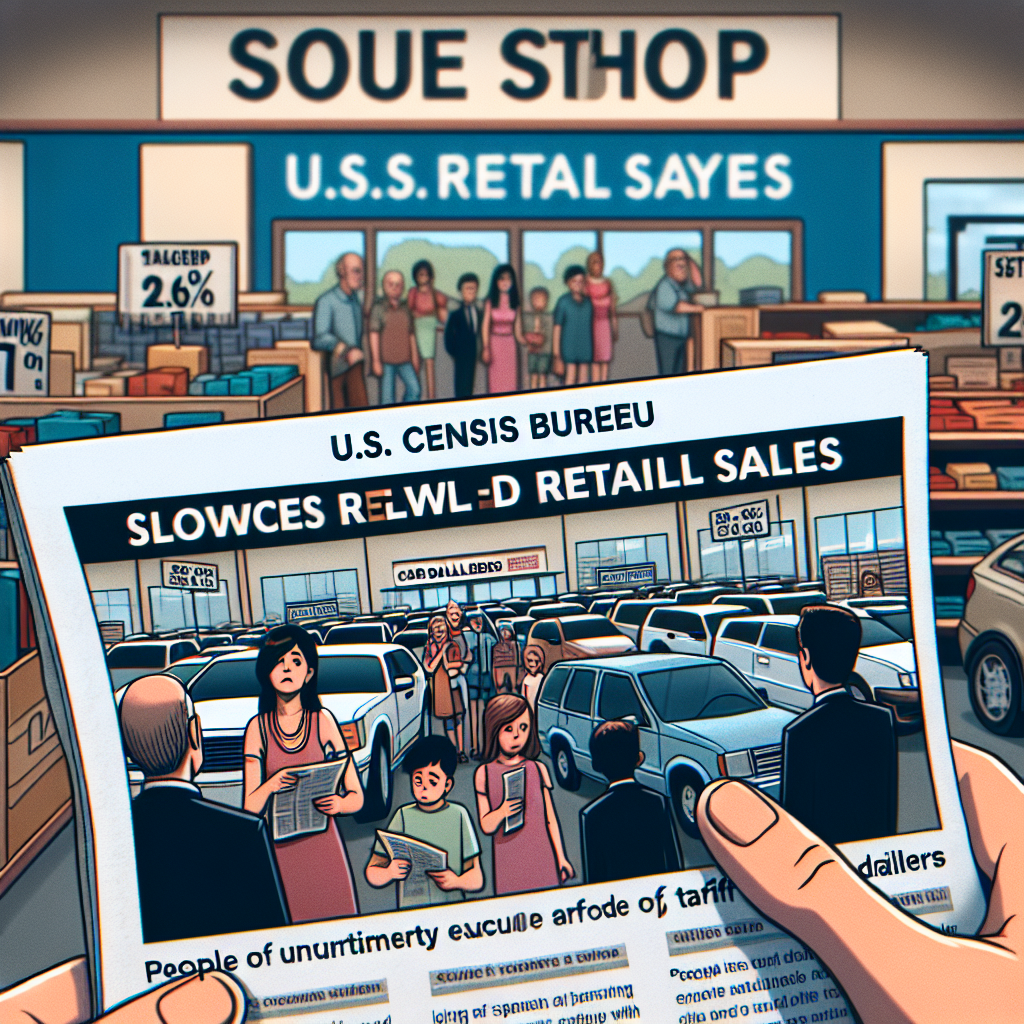Amid the waning impact of the boost from households purchasing motor vehicles ahead of the effective date of tariffs and with families cutting back on other expenditures against an uncertain economic backdrop, retail sales growth in the United States slowed in April.
The U.S. Census Bureau announced on Thursday, May 15th, that retail sales in April only saw a marginal increase of 0.1%, while March’s growth was revised upward to 1.7%.
Economists surveyed by Reuters had previously expected retail sales (mainly goods, not adjusted for inflation) to remain flat after a 1.5% increase in March. Estimates ranged from a decline of 0.6% to a gain of 0.4%.
This year, due to the impact of President Donald Trump’s tariff policies, retail sales figures have shown fluctuations. In April, a 25% tariff on global automobiles and trucks took effect, sparking a wave of pre-purchases by households to avoid potential price hikes.
With tariffs on imports from China raised to 145% and a comprehensive 10% tariff imposed on almost all imported products into the U.S., consumers were encouraged to make pre-tariff purchases, which supported sales in April.
Despite a 90-day ceasefire agreement reached between Washington and Beijing over the weekend regarding the trade war, reducing import tariffs, the future remains uncertain.
Excluding automobiles, gasoline, building materials, and food services, retail sales in April decreased by 0.2%, compared to the upwardly revised growth of 0.5% in March. These so-called “core retail sales” are closely linked to the consumption expenditure component of gross domestic product (GDP).
Economists had previously expected core retail sales growth of 0.3% in April on the basis of a 0.4% increase in March.
Economists anticipate a mild rebound in the economy following a contraction at a rate of 0.3% in the previous quarter, which was driven by a surge in imports as businesses rushed to bring in goods before the tariffs took effect.
While consumer spending continues to be supported by robust wage growth in the labor market, households are reducing discretionary expenditures on services such as airfare and hotel accommodations due to economic uncertainty and recent stock market declines.
Based on an analysis of credit card data from the Bank of America Institute, most households are in good financial standing, with more consumers able to pay off credit card balances monthly. However, the institute also noted an increase in the proportion of households only paying the minimum credit card amount, indicating some families are facing debt pressures.
Despite the fluctuations in U.S. retail sales caused by President Trump’s tariff policies, the Producer Price Index (used to track inflation before consumer prices rise) fell by 0.5% in April compared to March, marking the first decline since October 2023 and the largest drop in five years.
A report from the U.S. Department of Labor on Thursday showed that in April, producer prices rose by 2.4% compared to the same period last year, lower than the year-on-year increase of 3.4% in March. Service prices fell by 0.7%, the largest decline since 2009, attributed to reduced profit margins for wholesalers and retailers.
The Department of Labor reported on Tuesday that consumer prices rose by just 2.3% in April compared to April 2024, the smallest year-on-year increase in four years.
While economists predict that Trump’s tariffs will raise prices, the constantly changing tariff landscape makes it difficult to forecast their impact on the economy.
For example, on Monday, Trump unexpectedly agreed to significantly ease the trade war with China (the third-largest source of U.S. imports), reducing tariffs on Chinese products from 145% to 30%; China reciprocated by lowering retaliatory tariffs on U.S. products from 125% to 10%.
Sal Guatieri, a senior economist at BMO Capital Markets, wrote in a commentary, “Tariffs have not yet had a significant impact on prices, but that may only be a matter of time.”
(This article references reports from Reuters and the Associated Press)

